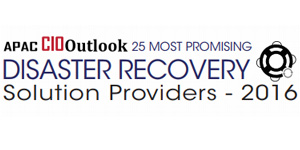Be it a business or a natural calamity, disasters are inevitable and its aftermath’s are even more devastating. A proven exemplar to it is the report published by the Business Continuity Institute in 2012. The study highlights that 74 percent of the organizations feel unplanned IT and telecom outages as the top threat to their business. And so, every industry including financial, healthcare, IT, insurance and many others must adhere to the international mandates to set up a proper DR plan—having real-time, effort and cost process—to avoid any disaster downtime. Therefore, it is imperative to formulate a detailed recovery plan with the IT projects and involve a significant investment in developing new areas of technical expertise.
However, SME’s often stumble to have a technical expertise within the enterprise to set up the duplicate data center required to implement a DR strategy. Cost optimization and reduced focus on the core business processes are the key reasons behind it. With several alternative strategies for Disaster Recovery including cloud technology and many disaster recovery service providers (DRSPs) to offload their disaster recovery operations, Enterprises’ these days are keen to associate with DRSP rather than having an in-house team.
But as every organization and its disasters are unlike, so should be the implementation of BC/DR planning processes. To prevent enterprises downtime, the current edition of APAC CIO Outlook brings to the limelight “25 Most Promising Disaster Recovery Solution Providers.” It talks about the various DR plans and solutions provided by several organisations. At the same time, this checklist list determines to aid people and corporations to find the right Disaster Recovery Solution Providers who can fulfill their specific requirements, and help streamline business processes and build a perfect security shield around their businesses.










































